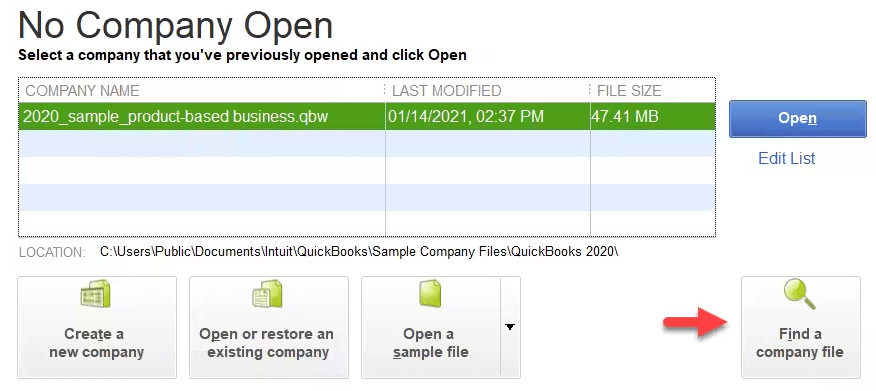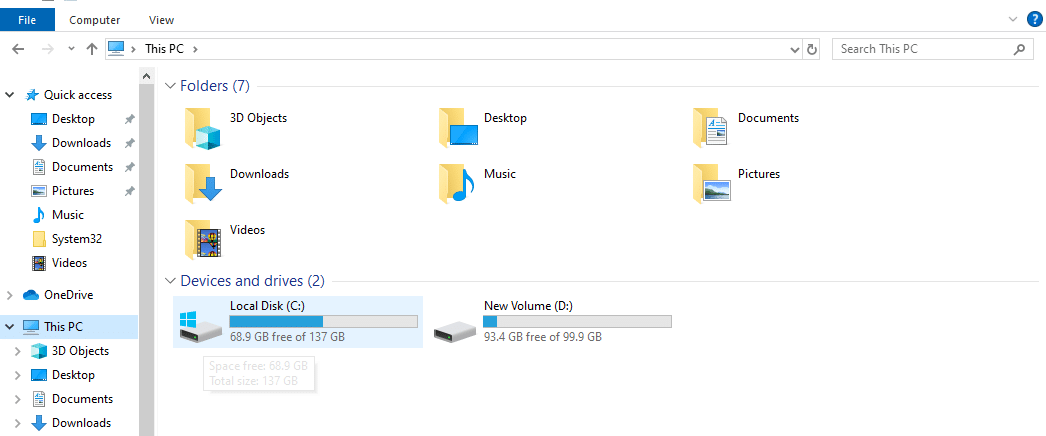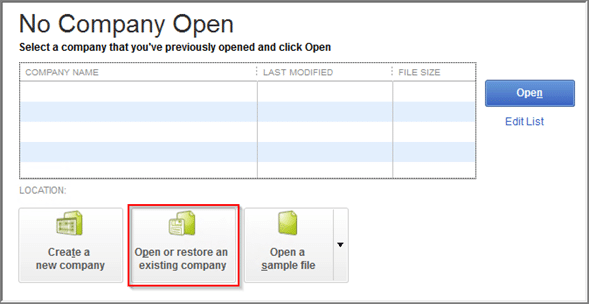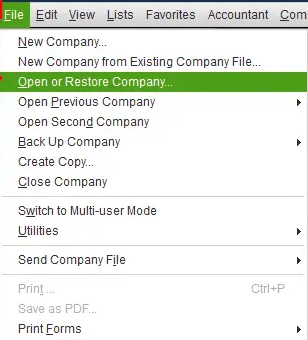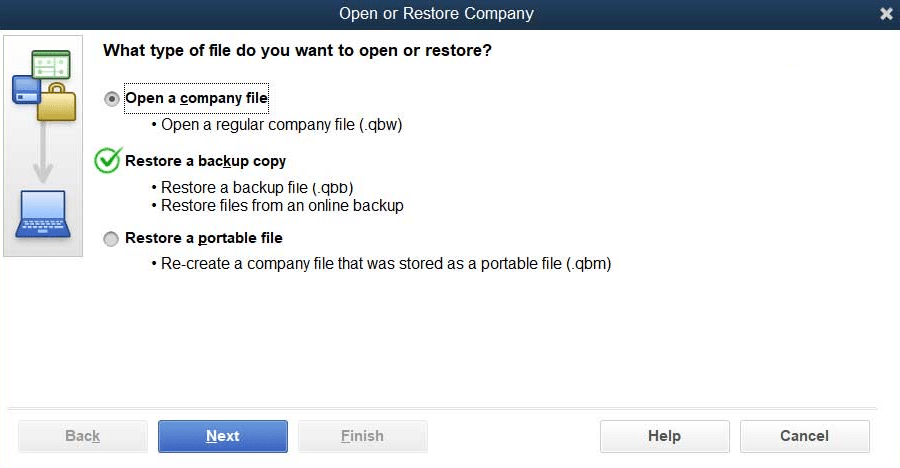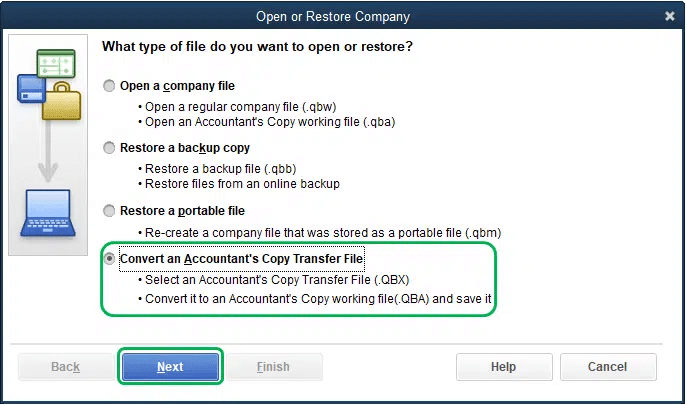Last Updated on September 24, 2025
The QBDT Company file is used to store and maintain your important accounting and bookkeeping data. Creating a company file is the first thing you do after activating the QB software. You have the option to save the company file on its default location, which is – C:\Users\Public\Public Documents\Intuit\QuickBooks\Company Files, or a custom location. This is where all your data is saved and accessed while working in QBDT. However, due to some technical or human error, the QuickBooks company file location might go missing. In this blog, we’ll talk about how you can find your QuickBooks company file in great detail.
Are you having trouble locating your QuickBooks company file? Contact our Accounting Helpline’s experts at 1.855.738.2784 today to resolve your problem in no time!
What is QuickBooks Company File Location?
The QuickBooks default company file location is C:\Users\Public\Public Documents\Intuit\QuickBooks\Company Files. I.e., this is where the file would be stored on your system if you didn’t move or change the location manually. If you can’t find the file in this file path, it means you or someone has either moved or changed the file. However, QB Desktop can make it easy for you to find your company file from the app itself. The steps to do so are as follows:
- In the No Company Open window, click on Find a company file.

- QB would now scan for the following file extensions:
- .QBW – Your QB company file
- .QBB – Your QB company backup
This way, you would be able to find your QuickBooks company file location. However, if you can’t, you might have to manually search for the extensions on your PC, so let us first discuss the different file types and extensions used by QBDT.
QuickBooks Desktop: Different File Types and Extensions
Given in the table below are the different file types and extensions that your QB files might be saved as:
QUICKBOOKS DESKTOP FOR WINDOWS
| File Extension | What is it |
| .qbw | QuickBooks company file |
| .qbb | QuickBooks backup file |
| .qbm | QBDT portable file |
| .qbo | QB bank statement file |
| .qbx | Accountant’s review copy/ transfer file |
| .qba | Accountant’s copy file |
| .qby | Accountant’s copy import file |
| .qbj | General journal entries file |
QUICKBOOKS DESKTOP FOR MAC
| File Extension | What is it |
| QB2016 | Company file |
| QB2019 | Company file |
| MAC.QBB | Backup file |
| DMG | Apple disk image file |
| plist | Apple property list files |
These are the file types and extensions for QuickBooks Desktop.
How to Manually Locate Your QuickBooks Desktop Files?
You can manually locate your QB Desktop files with the help of the Start menu on your PC. Let us discuss how to find your backup and company files.
QuickBooks Desktop Backup Files
To manually find the QuickBooks backup file location through the Start menu, take note of the things mentioned below:
(Note: ensure to include an asterisk [*] before the file extension type to make sure the search works as intended)
- In the Type here to search section in the Toolbar, search for *.qbb.
- After the search is complete, note down the location in the Folder column.
- Also, note down the Size and the Date Modified column.
- Ignore any sample files.
- The Date Modified column will help tell you when the file was last changed.
Now, let’s proceed to locating your QuickBooks company file.
QuickBooks Desktop Company Files
To find the QuickBooks company file location manually, follow the steps given below:
- Open the Start menu.
- Type in File Explorer.
- Then, open the File Explorer.
- Now, click on This PC.

- Go to the search field and type in *.qbw (ensure that you add the asterisk [*]):
- You can also just search *.qb to find both company and backup files at the same time.
- Check the file name, date, timestamp, and size to identify the correct file.
These were the steps to find your QuickBooks company file location.
The Way to Change the Company File Location of QuickBooks
If you want to change the QB company file location, first open the folder where the file is stored and then follow these steps:
- Find your company file.
- Right-click on it.
- Select Copy.
- Now, navigate to the location where you want to move the file.
- Right-click on the blank space and press Paste.
- Now, open the QuickBooks Desktop app.
- Select Open or restore an existing company.

- Choose Open a company file.

- Then, click on Next to proceed.
- A new window will open.
- Now, in the window, navigate to your new QuickBooks company file location.
- Select the file.
- Click on Open.
This would change the location of your QuickBooks company file.
Rectify the QuickBooks Company File is Missing Error
If you face the QuickBooks company file is missing or can’t be found error with the error message “Warning: The company file you selected could not be found. You can try one of the following:
Choose the ‘Open or Restore Company…’ command from the ‘File’ menu to look for this file in a different directory.” or “Use the ‘Search’ tool from the Windows ‘Start Menu’ to search for this file on your computer.” You can perform the given troubleshooting methods to resolve it:
Search for Your Company Files
You can manually search for your QuickBooks company files with the Start menu by using the methods given in the sections above.
Open Your File in QuickBooks
You can also fix this error by opening your QuickBooks file in the app. The steps vary depending on the file type, so let’s cover all three of them:
Opening an accountant’s copy (.qba) or a company file (.qbw)
- Open QuickBooks Desktop.
- Navigate to the File menu.
- Click on Open or Restore Company.
- Press Open a Company File.
- Select Next.
- Choose your company file.
- Press Open.
Restoring a backup file (.qbb)
- Navigate to the File menu.
- Click on Open or Restore Company.
- Select Restore a Backup File.

- Press Next.
- Choose the Local Backup option.
- Select the backup company file.
- Press Next.
- Now, choose the location where you would like to save the restored file.
- Lastly, select Save.
Restore an Accountant’s Copy Transfer file (.qbx)
- Open the File menu in QuickBooks Desktop.
- Click on Open or Restore Company.
- Press the Convert and Accountant’s Copy Transfer File option.

- Click Next.
- The What the Accountant’s Copy Can and Can’t Do window might open.
- Press Next.
- Choose the transfer file (.qbx).
- Press Open.
- Now, select the location to save the file.
- Lastly, press Save.
This would resolve the can’t find company file error in QuickBooks Desktop.
QuickBooks Company File Location | A Quick View Table
In the table below is a concise summary of this blog on the topic of the location of your QuickBooks company file:
| Default company file location | The default QuickBooks company file location is – C:\Users\Public\Public Documents\Intuit\QuickBooks\Company Files |
| How to find the QuickBooks company file? | To find the QB company file, go to the No Company Open window and select the Find a company file option. You can also manually find the company file by searching for its extension in the Start menu. |
| How to fix the QB company file is missing error? | You can fix this error by searching for your company file manually or opening your file in QuickBooks Desktop. |
Conclusion
In this blog, we talked about your QuickBooks company file location and how you would be able to find it on a custom file path. Additionally, we also provided you with the methods to troubleshoot the QuickBooks company file is missing error. If you are unable to find your company file, you can take the help of our QB experts to resolve your problem at a moment’s notice. Contact our Accounting Helpline’s experts at 1.855.738.2784 today!
FAQs
Where are my QuickBooks files stored?
Your QuickBooks Desktop company file is usually stored at the file path – C:\Users\Public\Public Documents\Intuit\QuickBooks\Company Files. This is its default location, but the file path can be different if you choose to store the file in a custom location while setting up QuickBooks Desktop.
How to find the company ID in QuickBooks Desktop?
To find the company ID in QuickBooks Desktop, go to the File menu and follow the steps given below:
– Click on Open Previous Company or Recent Company Files.
– You will see a list of company files, including their IDs.
Where does QuickBooks store data?
QuickBooks stores data wherever your company file (.qbw) is located. The default location to store data is C:\Users\Public\Public Documents\Intuit\QuickBooks\Company Files, but it can be changed depending on whether the user chose to store it in a different location.
How to retrieve QuickBooks data?
To retrieve QuickBooks data from a backup file, open QuickBooks Desktop and in the No Company Open window, perform these steps:
– Click on Open or Restore Company.
– Select Restore a backup copy.
– Press Next.
– Select the Local Backup option.
– Click on Next.
– Browse and find your QuickBooks backup file (.qbb).
– Choose a folder to save your restored file.
– Lastly, press Save.
Related Posts-
QuickBooks Unable to Backup Company File- Instant Solutions
QuickBooks Cannot Communicate with the Company File [SOLVED]
‘This Company File Needs to be Updated’ Issue Resolved
Doable Fixes for QuickBooks Company File Not Found Issue
Expert-Approved Resolution Guide to QuickBooks Unrecoverable Error Codes
How To Fix QuickBooks Error PS038? Easiest Method

Edward Martin is a Technical Content Writer for our leading Accounting firm. He has over 10 years of experience in QuickBooks and Xero. He has also worked with Sage, FreshBooks, and many other software platforms. Edward’s passion for clarity, accuracy, and innovation is evident in his writing. He is well versed in how to simplify complex technical concepts and turn them into easy-to-understand content for our readers.


